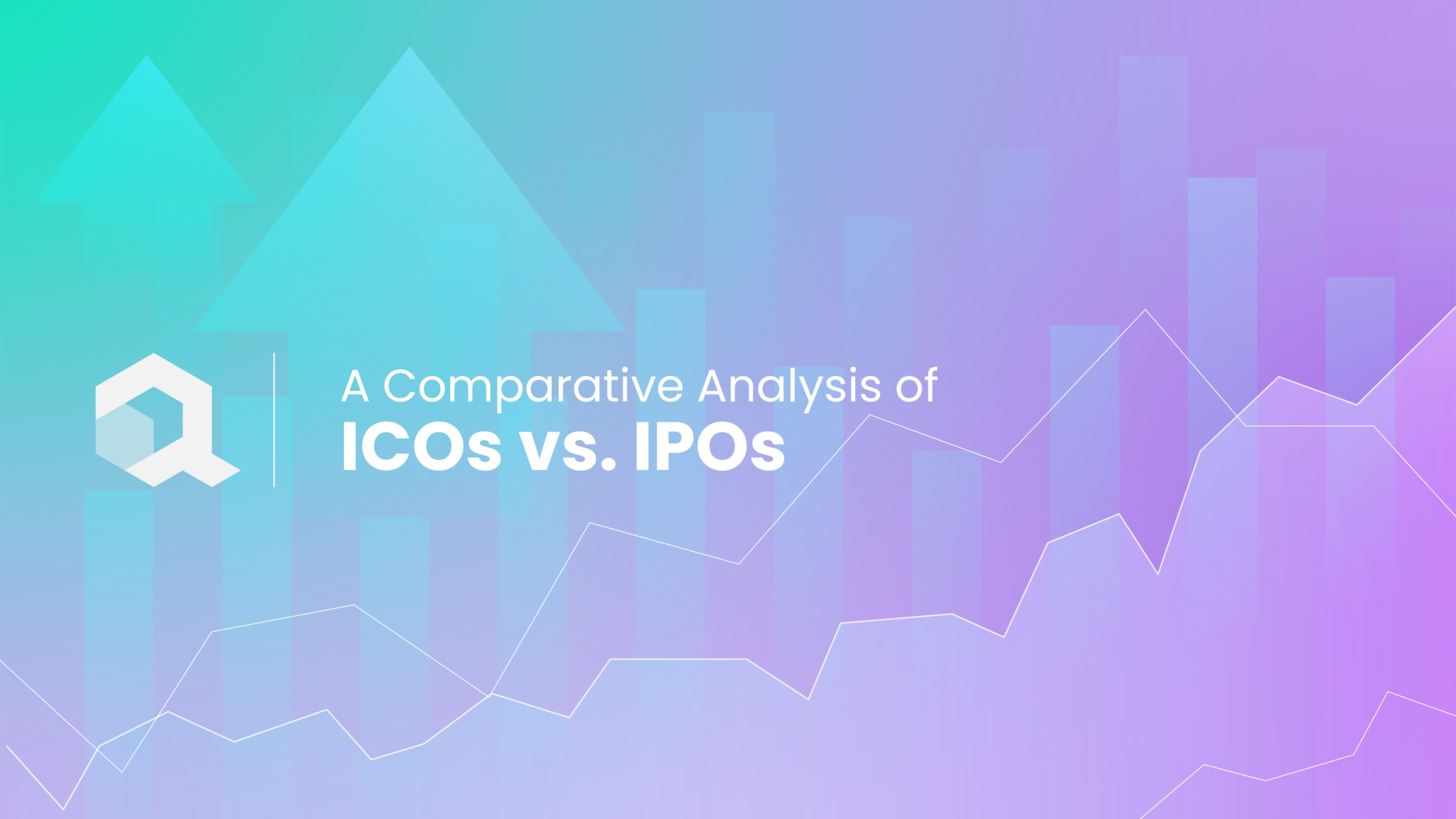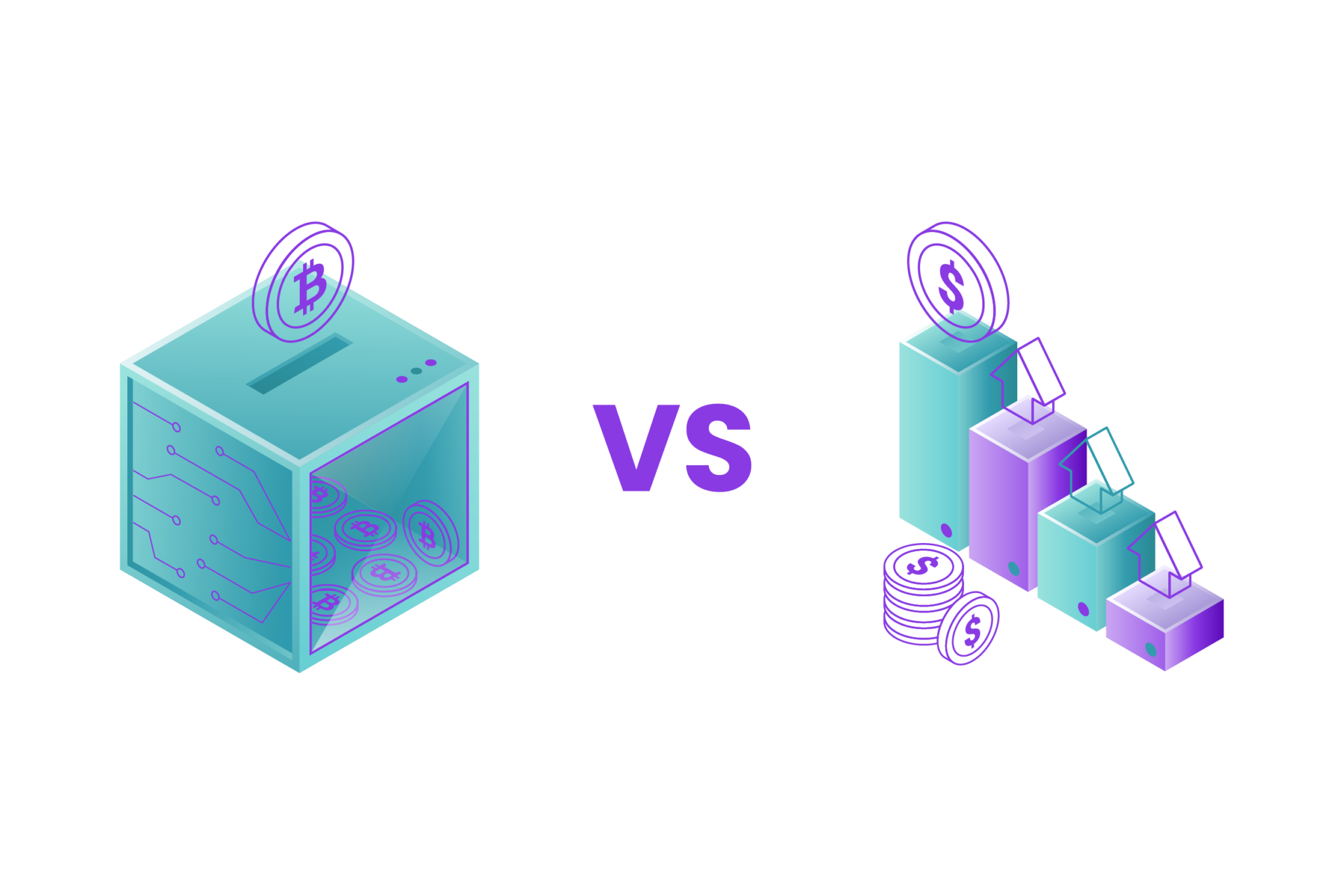
New avenues for raising capital have emerged alongside traditional methods. Two prominent options that have gained significant attention are Initial Coin Offerings (ICOs) and Initial Public Offerings (IPOs). While both serve the purpose of raising capital from investors, they operate in distinctly different ways and come with their own set of risks and advantages.
Whether you’re an enterprising entrepreneur seeking to finance your vision or an astute investor looking for the next promising opportunity, grasping the intricacies of ICOs and IPOs is essential to making sound financial choices in today’s multifaceted investment landscape. In this article, we’ll delve into the world of ICOs and IPOs, providing a comprehensive comparison to help you understand the key differences and make informed investment decisions.
ICOs: The Rise of Cryptocurrency Crowdfunding

In the past decade, Initial Coin Offerings (ICOs) have surged in prominence, primarily driven by the rapid expansion of the cryptocurrency market. ICOs have introduced a groundbreaking method for startups and blockchain projects to secure the necessary funding for their endeavors. Rather than adhering to the conventional approach of offering traditional shares, ICOs leverage blockchain platforms like Ethereum to issue digital tokens, or coins.
These digital fundraising events come with a set of defining characteristics that set them apart from more established forms of capital raising. Firstly, ICOs boast remarkable accessibility, welcoming a global audience of investors, often with minimal financial barriers to entry. This inclusivity fosters diversity among their investor base. However, it’s important to note that ICOs and IPOs are different. ICOs also come with a relative lack of regulatory oversight compared to traditional fundraising methods like Initial Public Offerings (IPOs). While this regulatory flexibility can encourage innovation and adaptability, it also exposes investors to potential risks, such as fraudulent schemes and scams.
Also Read: Crypto Market Making: What is The Strategy?
Furthermore, ICO participants receive digital tokens or coins in exchange for their investments. These tokens can serve dual purposes: they may represent ownership in the project, entitling investors to a share in its potential success, or they may provide utility within the project’s ecosystem, granting access to specific services or functionalities. This token-based ownership model has become a hallmark of ICOs.
Lastly, ICOs are often embraced by startups in their early developmental stages, providing a means to raise crucial capital for their projects or blockchain platforms. This early-stage investment opportunity empowers these budding ventures to secure the financial backing needed to realize their vision, even before achieving widespread recognition or widespread adoption. Overall, the distinctive features of ICOs have fueled their growing popularity, making them an attractive option for entrepreneurs and investors seeking innovative pathways to navigate the dynamic landscape of cryptocurrency and blockchain technology.
IPOs: The Traditional Path to Public Markets

Initial Public Offerings (IPOs) serve as the conventional pathway for companies seeking access to the public capital markets. In an IPO, a previously private company takes a significant step by offering its shares to the public for the first time, thereby undergoing the transformation into a publicly traded entity. These IPOs exhibit several distinctive characteristics that underscore their status as a traditional and regulated method of raising capital.
Firstly, they are subject to stringent regulatory oversight enforced by government authorities and financial watchdogs. These regulations are meticulously crafted to ensure transparency, accountability, and fairness throughout the offering process. Consequently, the regulatory framework surrounding IPOs provides investors with a higher degree of protection and access to comprehensive information, enhancing investor confidence.
The difference of ICOs and IPOs, In contrast to Initial Coin Offerings (ICOs), where participants receive digital tokens, investors in IPOs acquire tangible shares of the company. These shares entitle them to ownership in the company and the potential to receive dividends, thereby granting them a direct stake in the fortunes and profitability of the enterprise.
IPOs are typically reserved for well-established companies with a proven track record, substantial financial backing, and a demonstrated ability to operate profitably. This exclusivity ensures that only companies with a certain level of maturity and stability can access public capital markets through this method, which is in stark contrast to the more accessible nature of ICOs.
Crucially, investment banks play a pivotal role in the IPO process by underwriting the offering. If we talk about the different types of ICOs and IPOs, these financial institutions determine the offering price of the shares and actively assist in various aspects of the process, ranging from the preparation of financial documents to the allocation of shares to investors. The presence of underwriters adds a layer of expertise, oversight, and efficiency to the execution of an IPO, ensuring that it is conducted fairly and in compliance with regulatory requirements.
Comparison: ICOs vs IPOs

There are unique characteristics of ICOs and IPOs; let’s conduct an in-depth comparison between these two distinct methods of raising capital, shedding light on their differences and highlighting their relative advantages and disadvantages.
1. Regulation
One of the most prominent disparities between ICOs and IPOs is the level of regulatory oversight they undergo. ICOs are generally characterized by a more relaxed regulatory environment, offering greater flexibility and innovation potential. However, this flexibility also exposes investors to a higher risk of fraudulent activities, as the lack of stringent regulations can make it easier for unscrupulous actors to manipulate the market.
In contrast, IPOs are subject to rigorous regulatory scrutiny enforced by government authorities and financial watchdogs. This robust oversight ensures transparency, accountability, and fairness throughout the offering process, providing investors with a higher degree of protection against fraudulent schemes and scams. The regulatory framework surrounding IPOs thus bolsters investor confidence.
2. Ownership
Another significant distinction lies in the nature of ownership each method offers to investors. ICOs predominantly provide token-based ownership or utility within the project’s ecosystem. These tokens may grant investors a stake in the project’s success or access to specific services or features.
In contrast, IPOs offer equity-based ownership, where investors purchase shares of the company. This equity ownership typically includes voting rights in the company’s decisions and the potential to receive dividends, representing a more traditional and tangible form of investment.
Also Read: Top 10 Trusted Crypto News Websites to Keep You Informed (Update 2023)
3. Investor Access
Accessibility is a notable contrast between ICOs and IPOs. ICOs are celebrated for their inclusivity, as they are open to a global audience, including retail investors. This global accessibility allows individuals from diverse backgrounds and locations to participate, often with minimal investment requirements.
In contrast, IPOs are often initially reserved for institutional investors, which can limit access for individual retail investors. However, as the IPO process advances, retail investors typically gain access to the shares after the initial offering, albeit sometimes at a different price point.
4. Risk and Reward
Risk and potential rewards diverge significantly between ICOs and IPOs. ICOs are known for their heightened speculative nature and volatility. While they offer substantial potential rewards, they also expose investors to substantial risks, including price fluctuations and market instability.
IPOs, although not entirely immune to market fluctuations, tend to be more stable due to the regulatory controls in place. This stability can provide a degree of assurance for investors, particularly those with a lower tolerance for risk.
5. Purpose
Lastly, the purpose of ICOs and IPOs differs significantly. ICOs are commonly utilized by startups and blockchain projects at early stages of development to raise capital for their projects or platforms. This allows these nascent ventures to secure funding and realize their vision even before gaining widespread recognition or adoption. Conversely, IPOs are typically pursued by well-established companies with a proven track record. They may opt for an IPO to facilitate expansion, fund operations, or provide liquidity to existing shareholders.
the choice between ICOs and IPOs depends on various factors, including risk tolerance, investment goals, and the specific opportunities each method presents. ICOs and IPOs have different approaches. ICOs offer accessibility and innovation but come with greater risk, while IPOs provide stability and regulatory protection but are often reserved for more established enterprises. Making informed investment decisions in this dynamic financial landscape requires careful consideration of these key differences and their implications for both issuers and investors.
Conclusion
ICOs and IPOs represent two distinct paths to raising capital, each with its own set of advantages and risks. ICOs offer accessibility and early-stage investment opportunities but lack the regulatory oversight associated with IPOs. IPOs, on the other hand, provide investor protection and equity ownership but are typically reserved for established companies.
Understanding these key differences is essential for investors looking to navigate the complex world of finance effectively. Ultimately, the choice between ICOs and IPOs depends on your risk tolerance, investment goals, and the specific opportunities presented by each method. It’s crucial to conduct thorough research and seek professional advice before diving into either option to make informed and strategic investment decisions.
Disclaimer: The information provided by Quant Matter in this article is intended for general informational purposes and does not reflect the company’s opinion. It is not intended as investment advice or a recommendation. Readers are strongly advised to conduct their own thorough research and consult with a qualified financial advisor before making any financial decisions.

I craft stories that make complex ideas clear. I simplify the blend of data science, machine learning, and crypto trading, showcasing how advanced tech and quantitative models analyze data for informed trading choices. Join me in exploring the realm of quantitative trading, where my narratives make intricate concepts easy to grasp.
- Alifia Berizkyhttps://quantmatter.com/author/alifia-berizky/
- Alifia Berizkyhttps://quantmatter.com/author/alifia-berizky/
- Alifia Berizkyhttps://quantmatter.com/author/alifia-berizky/
- Alifia Berizkyhttps://quantmatter.com/author/alifia-berizky/
